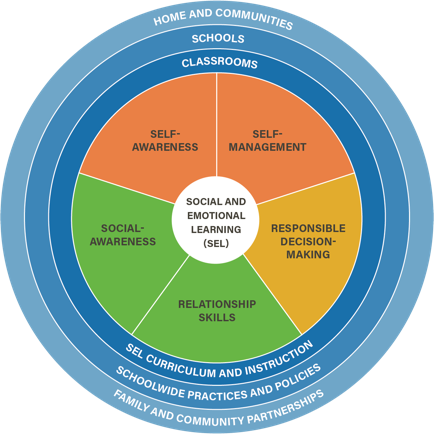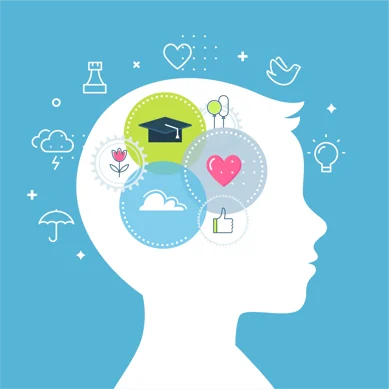What is SEL?
The accepted definition for SEL comes from the Collaborative for Academic, Social, and Emotional Learning (CASEL) and revolves around five core competencies: “understand and manage emotions, set and achieve positive goals, feel and show empathy for others, establish and maintain positive relationships, and make responsible decisions.” We encourage you to visit the CASEL website for a more thorough understanding of SEL, its outcome measures, and their resources tab for current research findings and information regarding implementation.
Who is being left out?
Social and emotional learning is not a new topic, and its benefits to children are backed by decades of research. Improving these social and emotional competencies in students results in payouts in many different areas (just do a quick Google search to glimpse at the benefits of SEL). However, the people with arguably the most to gain from SEL–students with disabilities–are often times the ones excluded from the SEL framework in some fashion. A quite simple explanation for this is that students with disabilities are unique, and there is no single framework that works for them all. Read this article from EdSurge to understand some of the motivation behind this section and for some examples of how different students with disabilities tend to be excluded from SEL.
How can we advocate for inclusivity?
First, read this article by Dr. David Lichtenstein titled “How to Bring SEL to Students with Disabilities.” While this is specifically targeted at teachers, we can all benefit from several key points that are brought up in the article. It’s an insightful read, particularly when you consider the care of both giving and receiving, and how SEL can improve teacher-student relationships, which in turn could decrease caregiver fatigue and burnout. Ultimately, there is no easy solution to teaching SEL to students with disabilities. The answer involves a shift in our perspectives (for example, coining the term “skill deficits”), collaboration on all sides, and lots of creative thinking at the very least.
Being an effective advocate ultimately requires you to be knowledgeable on the topic of SEL for students with disabilities. Consider this policy brief from the American Youth Policy Forum (AYPF), specifically pages 7-9 for more information. Our goal with this page and any other page is not to provide comprehensive information regarding any specific topic. We aim to provide you with enough background knowledge to begin asking informed questions, and we encourage you to search the web for more answers. With regard to advocacy, once you become familiar enough with this topic, you will get a better sense of what the barriers are to inclusivity and who the key players are that you need to be in contact with. For example, we know from the policy brief that there is lack of policy supporting SEL in an IEP, and it may or may not be reasonable for you to reach out to your state legislator about it. As an advocate for your child, it is up to you to become educated in the topic and decide how you will make a difference.



